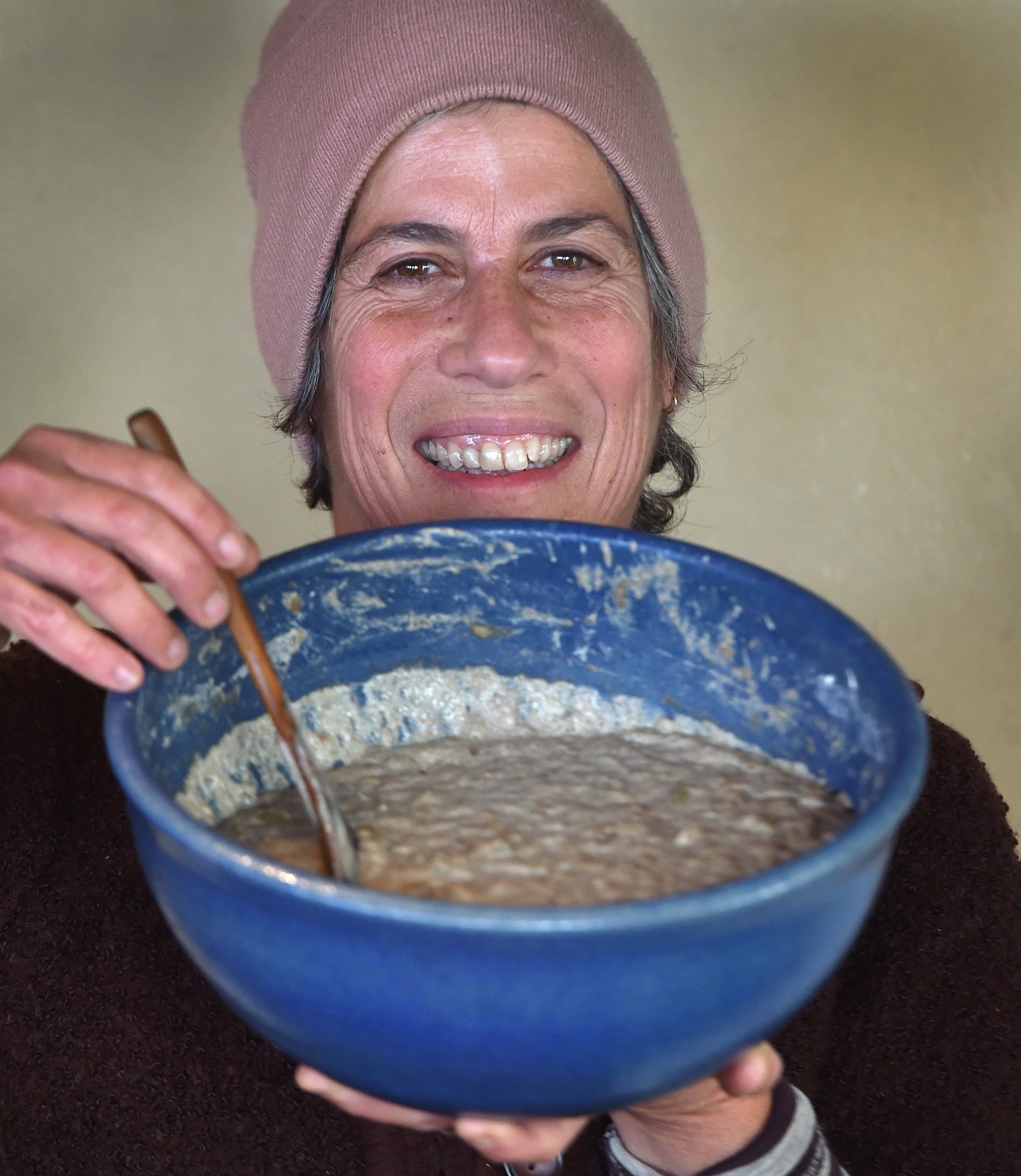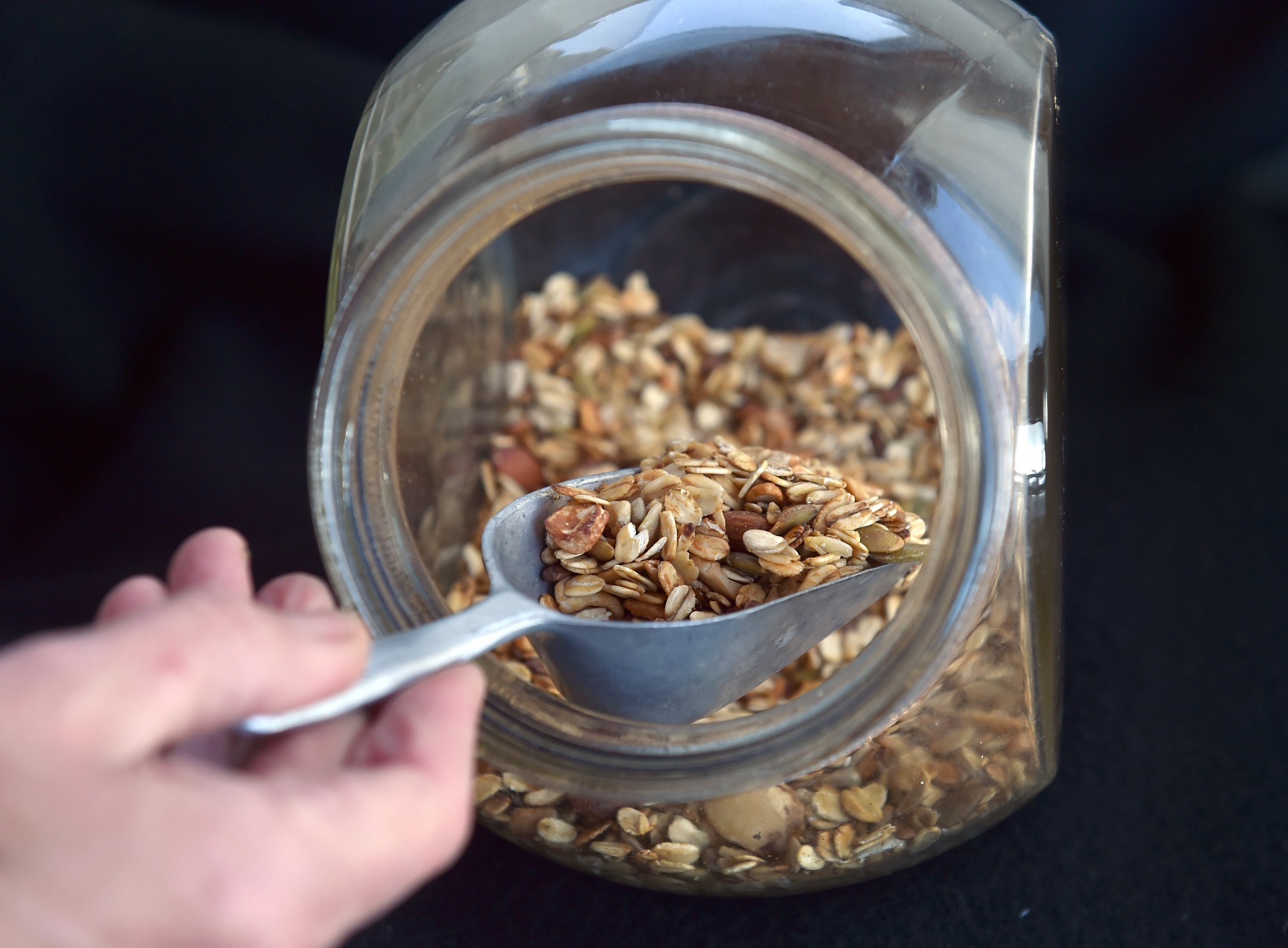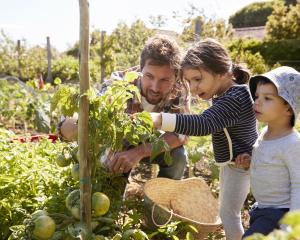
And when we shop for a few staple items in bulk we are saving not just money at the checkout, but on medical bills and more — such as packaging and food waste.
Contrary to common belief (or food industry marketing) we don’t need to buy the cheapest products available just because the budget is tight. We don’t need to compromise on quality to keep food costs down.
Poor quality foods won’t keep you full for long — so you actually end up buying more cheap and nutritionally empty food.
By contrast, shopping for raw and wholefood ingredients is best for your pocket and your health — wholegrains keep you full longer and bulk buying of grains, beans and flours means a cheaper price per kilo. Buying in bulk also means always having those healthy raw materials to hand, keeping us on track for good health.
Buying in-season produce also makes good sense, as it is often cheaper than imported produce. Buying directly from the farmer is not only cheaper but also healthier as fresh produce is more nutritious.
When I was a young vegan, living in Auckland on almost nothing, we always ate well. We kept up with spirulina and seaweed, tempeh and tofu, we were health-conscious so we were juicing vegetables and fruit (organic were possible) on a daily basis, as well as cooking big meals every day. To get lots of fresh produce cheaply, we used to go to the outskirts of Auckland to the market gardens and buy big banana boxes full of seasonal fruit and veges. What it takes to keep healthy when we don’t have a lot of cash then, is awareness and good will in the kitchen — learning the basic skills of making bread, and cooking simple nutritious meals.
Simplicity and home-cooking are key for keeping food costs down, and making our staple foods from scratch means we are cutting out additives and preservatives that are always present in cheap white bread and ready meals.
So baking bread, eating porridge for breakfast, and making your own pizza, bean chilli or dahl and rice for family meals are good examples of simplicity in home cooking.
Here are a few key points for saving money by eating real food:
1. Buying in-season produce is cheaper. Visit the Farmers Market to find the local produce as fresh as fresh can be.
2. Eating an unprocessed diet gives you a fuller belly for longer. A pot of brown rice is a lot more filling than white rice. Eating fruit and nuts for snacks will also satisfy the hunger between meals and add to your daily nutrition.
3. Buying the basics in bulk means paying less per kg and keeps you eating the healthy basics — flour, oats, brown rice, beans, lentils.
4. Home baking — baking bread means we are not consuming all the additives and refined flour that cheap bread has in it. Look at what you and your family consume most of and try to make it yourself.

Sourdough
Sourdough starter needs to be prepared or bought for this recipe — you can contact Hagar to buy the starter.
Starter
To keep you starter going, add 2 tablespoons or more of flour and a bit of warm water, every 2 days, stir well.
To start making bread you will need 1 cup of starter, so add ½ cup of rye flour and ½ cup of warm water and let sit overnight to create enough starter, so you can start making bread the next day.
If you are not using it for a longer time, the sourdough should be fine for two weeks in the fridge.
Baking the bread
Put at least 1 cup of sourdough starter in a big bowl, add 3 cups flour (any sort), 2 cups water, seeds of your choice (linseed, pumpkin, sunflower, kibbled rye-soak first) and 3 tablespoons oil and stir well.
Wrap in a towel and leave overnight in a warm place.
Next morning
Add 2 cups flour, 1 teaspoon salt, and 1 tablespoon of sugar. Mix well and drop into a large oiled bread tin. Cover with a clean tea-towel and leave for another 2 hours minimum, in a warm place.
Bake in 200degC oven for 1 hour. Cool on a wire rack and store wrapped in cloth.

Muesli
Ingredients
4 cups whole oat flakes
1 cup sunflower seeds
½ cup pumpkin seeds
½ cup cashew nuts
½ cup almonds
½ cup of walnut pieces
(any nuts are welcome here)
1 Tbsp molasses (optional)
2 Tbsp honey
2 Tbsp olive oil or sunflower oil
Method
Heat an oven to 180degC, mix all dry ingredients in a large oven tray and place in the oven — until heated, about 10 min, pull the tray out and mix honey and oil in, stir it in and put the tray back in the oven and roast for ½ hr — stirring often — every 10 min or so, add the molasses if using, and stir it around, roast the muesli until it is golden brown. Cool and store in an airtight jar.

Dahl
Dahl is a soup made with legumes — lentils or split peas, urid beans or mung beans, which are used in the recipe here, you can use any legume of your choice.
Mung beans are versatile and cheap, can be sprouted by soaking overnight and then just rinsing twice a day until the sprouts are ready.
Ingredients
1 cup (200g) mung dahl
8 cups water
3 tsp salt
2 bay leaves
1 cinnamon stick broken in half
1 tsp turmeric
1 Tbsp olive oil or ghee
1 cup of assorted chopped vegetables
1 additional Tbsp oil
1 ½ tsp cumin seeds
2 dried chillies crushed
1 tsp grated fresh ginger
¼ tsp asafetida
1 Tbsp chopped fresh coriander
2 lemons cut into wedges
Method
Clean and wash and drain the dahl, combine the water salt bay leaves and cinnamon stick in a heavy saucepan and bring to the boil. Put the dahl into the boiling water. When the water comes to a second boil, partially cover the pan, lower to a medium heat,and cook for about 20 minutes, or until the dahl grains are quite tender. Remove any froth from the top of the cooking water, add the oil, turmeric and vegetables, continue to cook until the vegetables are tender and the dahl is completely broken up. In a frying pan heat up the additional oil toss in the cumin seeds and chilli flakes,stir once, when the cumin seeds darken add in the fresh ginger and the asafetida and fry for a few more seconds and add these seasonings into the dahl, cover the pot and allow the seasonings to blend into the dahl for 4 or 5 minute. The dahl should have thin consistency — if too thick add more water. Serve with rice or bread garnished with minced fresh herbs and a wedge of lemon.
Seasons - By Alison Lambert - Available for purchase now!

The Otago Daily Times and Alison have collaborated to bring you her first cookbook – Seasons.
This book is the ultimate year-round cookbook. Seasons is filled with versatile recipes designed to inspire creativity in the kitchen, offering plenty of ideas for delicious accompaniments and standout dishes that highlight the best of what each season has to offer.
$49.99 each. Purchase here.
$44.99 for ODT subscribers. Get your discount code here.












